Sean McBride's Blog, page 3
July 13, 2023
Blind Read Through: J.R.R. Tolkien; The Book of Lost Tales, Part 1; Gilfanon’s Tale
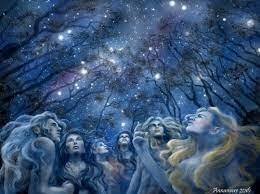
“Suddenly afar off down the dark woods that lay above the valley’s bottom a nightingale sang, and others answered palely afar off, and Nuin well-neigh swooned at the loveliness of that dreaming place, and he knew that he had trespassed upon Murmenalda or the “Vale of Sleep”, where it is ever the time of first quiet dark beneath young stars, and no wind blows.
Now did Nuin descend deeper into the vale, treading softly by reason of some unknown wonder that possessed him, and lo, beneath the trees he saw the warm dusk full of sleeping forms, and some were twined each in the other’s arms, and some lay sleeping gently all alone, and Nuin stood and marvelled, scarce breathing (pg 232-233).”
Welcome back to another Blind Read! This week we conclude The Book of Lost Tales, part 1, discussing symbolism and creative editing.
This chapter is more of Christopher’s musings on how his father was positioning the editing of the book rather than the tale itself. Gilfanon only has a few pages, and the rest of his story remains unfinished. In a more accurate sense, this is an early iteration of the chapter in the Silmarillion “Of Men.”

The origin of Men for Tolkien was a difficult thing to tackle. Christopher tells us that there were four different iterations throughout the process of coming up with the concept. Tolkien ended up significantly cutting down the chapter to be what it eventually became, which was relatively uninspired and just about as long as Gilfanon’s tale. One has to wonder if the weight of the linchpin of his mythology was so great that the chapter says, “They wake,” and then moves on.
Gilfanon’s tale tells of one of the Dark Elves of Palisor, Nuin. Nuin is restless and curious about the world, so he ventures out to experience it and comes across a meadow that holds The Waters of Awakening and humans sleeping near it (described in the quote above).
Nuin then heads back home and tells a great wizard who ruled his people about the humans sleeping by the waters and “Then did Tû fall into fear of Manwë, nay even of Ilúvatar the Lord of All (pg 233).” because of this fear he turned to Morgoth, and learned deeper and darker magic from him.

From what Christopher tells us, each version of the story Tolkien worked on evolved, and eventually, Tû, the Wizard, was cut from the Silmarillion. Tolkien cut nearly all mention of the elves who went to Morgoth’s side from the main context. There are only a few mentions of thralls throughout the main storyline.
One has to wonder if this was Tolkien’s decision that the Elves themselves shouldn’t turn to the “dark side.” Even though the Noldor did some heinous things in Swan Haven, they ultimately did it out of a hatred that burned so deep for Morgoth’s blood that they wouldn’t let anyone stand in their way.
The inclusion of Tû, even if he is more of a fay creature than Elvish, creates issues with Tolkien’s history. So he took the name Tû out of the book to keep the Elvish lines as “pure” as possible, but the character of Tû is still in the book, AND I believe he plays a much larger part.
Remember that Tû is described as a fay wizard, and the only wizards in the history of Eä were the Istari (of which Saruman and Gandalf were a part). The Istari were Maiar, otherwise known as lesser Valar. In general, they were servants to the Valar (in The Book of Lost Tales, many of them were the children of the Valar) and aided in bringing the will of Ilúvatar into being.

The Istari were sent to Middle-earth in the Second Age to assist the people of that land in their fight against Sauron. They could turn into a mist and travel vast distances to reach their destination – something Sauron did after the Drowning of Númenor.
So this early Wizard trained in the dark arts by Morgoth must be an earlier version of Sauron himself. Sauron, after all, assisted the Elves in the creation of the Rings of Power, was known to be a wizard himself, and eventually picked up Morgoth’s mantle when the Dark Lord was locked behind the Door of Night.
The other exciting portion of the quote I’d like to discuss before closing thoughts is the mention of Nightingales and the Coming of Man in the opening quote.
Nightingales generally have a long history of symbolism, more specifically revolving around creativity, nature’s purity, or a muse. All of these aspects center around virtue and goodness.
Tolkien is using the nightingale song to indicate a more artistic and virtuous age because when Nuin followed the song, he came across the sleeping children by the Waters of Awakening.
Tolkien’s tale is ultimately (as we’ve covered many, many times) about Man (read that as Humans), so everything we have read thus far has been pre-history, which is also why Christopher separated The Book of Lost Tales into a part 1 and a part 2. Part 1 is about how the world became what it was. Now that we have humans, Part 2 is about the rest of the first age and carries what Christopher calls “all the best stories.”

So the nightingale indicates to the fay and the Eldar (Gnomes in The Book of Lost Tales) that there will be a shift in the world, and they will no longer be the focal point. This also spooks Nuin because, at the moment, by the Waters, he sees that his time will come to a close eventually, even though he’s immortal. The world was not built for him but for the new creatures just now waking into the world.
Join me next week as we have some final thoughts on The Book of Lost Tales, part 1, before jumping into The Book of Lost Tales, part 2, the week after!
July 6, 2023
Blind Read Through: J.R.R. Tolkien; The Book of Lost Tales, part 1; The Hiding of Valinor, part 2
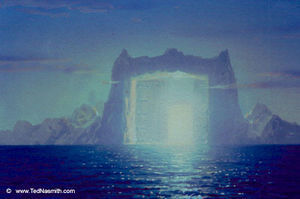 Art by Ted Nasmith
Art by Ted Nasmith“Thereat did Tulkas laugh, saying that naught might come now to Valinor save only by the topmost airs, ‘and Melko hath no power there; neither have ye, O little ones of the Earth’. Nonetheless at Aulë’s bidding he fared with that Vala to the bitter places of the sorrow of the Gnomes, and Aulë with the mighty hammer of his forge smote that wall of jagged ice, and when it was cloven even to the chill waters Tulkas rent it asunder with his great hands and the seas roared in between, and the land of the Gods was sundered utterly from the realms of the Earth (pg 210).”
Welcome back to another Blind Read! This week we conclude the tale of The Hiding of Valinor, as Tolkien delves deep into how he wanted to create the world.
This week is a perfect example of what a plotter writer does to create their world. Speaking from my own experience, worldbuilding is one of the hardest things to do as a writer because you want to thread the needle between creating a full, lush, believable world and muddling that same world with incessant useless details.
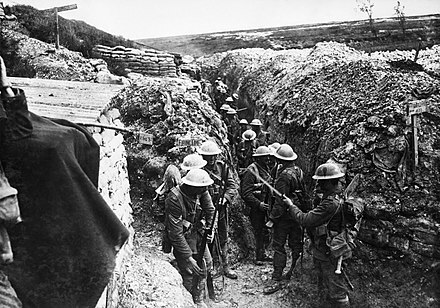
The Book of Lost Tales was never an actual book but a collection of notebooks, poems, anecdotes, and loose scrap paper Tolkien used to create his world over decades. From The Great War’s trenches to The Hobbit’s eventual publication, he filtered these notes to make what would later become The Silmarillion.
The Book of Lost Tales holds all the different cockamamie concepts which could comprise a fairy world. Christopher tells us many times that some of the detail has been cut because the text was re-written so many times (potentially multiple times in pencil and erased until Tolkien had a version he liked enough to write it out in pen… which many times was still not the last iteration)
What I’d like to cover this week for some fun differences is the detail Tolkien went to explain how the world came into being, which he later cut because much of it has little or nothing to do with the actual world.
The first instance I’d like to cover is the minutia of the Sun and the Moon route.
The Valar have a council for multiple pages concerning how they would go about hiding Valinor: “Nonetheless Manwë ventured to speak once more to the Valar, albeit he uttered no word of Men, and he reminded them that in their labours for the concealment of their land they had let slip from thought the waywardness of the Sun and the Moon (pg 214).”
We’ve previously discussed the path the Sun and the Moon had taken because of where different Valar (and Ungoliant) took up their residence. Still, they worry about “removing those piercing beams more far, that all those hills and regions of their abode be not too bringht illumined, and that none might ever again espy them afar off (pg 214).”
Yavanna worried that the change in the movement of the light from either the Sun or the Moon could create strife in the world, so Ulmo told them they had nothing to worry about. The Ocean is so large that the Valar don’t even fully comprehend its magnitude, nor have they ever interacted with any of the creatures of the world, “but Vai runneth from the Wall of Things unto the Wall of Things withersoever you may fare…ye know not all wonders, and many secret things are there beneath the Earth’s dark keel, even where I have my mighty halls of Ulmonan, that ye have never dreamed on (pg 214).”

Ulmo tells the other Valar they have nothing to worry about because the world is so vast that Ilúvatar’s children could never find them after centuries of looking. To counteract that worry, Ulmo and Aulë say they will build ships that can sail into Valinor so that Men and Eldar can come home.
The way Tolkien writes it, it’s unclear whether he means for the “children” to come home to heaven, or something a little more fairy tale-esque, like the Elysian Fields of Greek Mythology fame or Valhalla of the Norse. In any case, it’s a clunky bit of logic. I find it fascinating to see how Tolkien began devising the world, but I agree with Christopher that this level of detail is unnecessary for the greater story.
Finally, I’d be remiss if I didn’t mention one more cut—the creation of time.
“‘Lo, Danuin, Ranuin, and Fanuin are we called, and I am Ranuin, and Danuin has spoken.’ Then said Fanuin: ‘And we will offer thee our skill in your perplexity – yet who we are and whence we come or whither we go that we will tell to you only if ye accept our rede and after we have wrought as we desire (pg 217).'”
Instead of having time be attributed to the movement of the Sun and the Moon, Tolkien went much more mythological and created Tom Bombadil-type characters to create a way to understand the passing of time.
Danuin is the anthropomorphized concept of a Day, Ranuin is Month, and Fanuin is Year. They appear out of nowhere and approach the gods, offering gifts that later become this understanding of the passing of time.

Tolkien tells this tale at the end of the Hiding of Valinor because it is meant to be a passage of responsibility of the world to the next generation, the Eldar. The Valar are hiding away in Valinor, and the coming of these brothers created the concept of an “age.”
Before this moment, time didn’t exist, so the Valar just went about doing what they thought necessary, but this is also why the Eldar are immortal as well because they were born before time existed, men were born just after, so they were beholden to its aspect:
“Then were all the Gods afraid, seeing what was come, and knowing that hereafter even they should in counted time be subject to slow eld and their bright days to waning, until Ilúvatar at the Great End calls them back (pg 219).”
The brothers bestow this curse (or gift) of time and then say, “our job is done!” and peace out.
It’s curious how the brothers came into being, seeing as the Valar created everything in the world, but then again, there are deeper and unknown places in the world that others don’t know about, so this is a slight possibility; it’s just a clunky and unnecessary addition and one that even Christopher is glad he eventually cut:
“The conclusion of Vairë’s tale, ‘The Weaving of Days, Months, and Years’, shows (as it seems to me) my father exploring a mode of mythical imagining that was for him a dead end. In its formal and explicit symbolism it stands quite apart from the general direction of his thought, and he excised it without a trace (pg 227).”
Even Tolkien creates things where he looks back at it and realizes how out of sorts they are. Stand proud when you find mistakes because you know you FOUND them!
Join me next week as we jump into the last chapter of The Book of Lost Tales, part 1, “Gilfanon’s Tale: The Travail of the Noldoli and the Coming of Mankind.”
June 29, 2023
Blind Read Through: J.R.R. Tolkien; The Book of Lost Tales, Part 1, The Hiding of Valinor
 Art by Cenobitesquid
Art by Cenobitesquid“‘Lo, all the world is grown clear as the courtyards of the Gods, straight to walk upon as are the avenues of Vansamírin or the terraces of Kôr; and Valinor no longer is safe, for Melko hates us without ceasing, and he holds the world without and many and wild are his allies there’ – and herein in their hearts they numbered even the Noldoli, and wronged them in their thought unwittingly, nor did they forget Men, against whom Melko had lied of old. Indeed in the joy of the last burgeoning of the Trees and the great and glad labour of that fashioning of ships the fear of Melko had been laid aside, and the bitterness of those last evil days and of the Gnome-folk’s flight was fallen into slumber – but now when Valinor had peace once more and its lands and gardens were mended of their hurts memory awoke their anger and their grief again (pg 207-208).”
Welcome back to another Blind Read! This week we reveal the cowardice of the Valar, the mystical side of Tolkien, and an overcorrection I’m sure everyone will be glad removed!
The tale of The Hiding of Valinor is connected intrinsically to the Tale of the Sun and the Moon, and, as it’s told in The Book of Lost Tales, seems to be an aside as the end of that chapter.
Vairë continues telling the tale of the history of the world to Eriol and quickly reveals that the Valar had become cowards in their efforts to protect their own little space of the world:
“The most of the Valar moreover were fain of their ancient ease and desired only peace, wishing neither rumour of Melko and his violence nor murmur of the restless Gnomes to come ever again among them to disturb their happiness; and for such reasons they also clamoured for the concealment of the land (pg 208).”

The Valar were tired of strife. They believed their creation was to create beauty and harmony; that is all they wanted to see.
Events like the Elves’ slaughter at the Haven of Swans and Melkor’s revolt against his kin caused the Valar to throw a temper tantrum and close their door against anything they felt uncouth. The sad aspect of this is that they created the world, so, in essence, the Valar are embarrassed that the things they made (except for Melkor) could be capable of such horrors that they want to cover their eyes on the issues.
Tolkien even calls them out in the voice of Vairë:
“Now Lórien and Vána led the Gods and Aulë lent his skill and Tulkas his strength, and the Valar went not at that time forth to conquer Melko, and the greatest ruth was that to them thereafter, and yet is; for the great glory of the Valar by reason of that error came not to its fullness in many ages of the Earth, and still doth the world await it (pg 209).”
It was cowardice and childishness that caused them to close off Valinor, nothing more. They wanted to believe their world was perfect and decided to disregard the rest of the world and let the Eldar (Gnomes in this [early] version) deal with a god themselves (Melkor).
This belief is the true folly of the Valar because they, with the help of the one creator Ilúvatar, were the only ones who could stop Melkor. And they did so in such a cosmically horrific way that Lovecraft would be proud.
At the beginning of this book, Tolkien mentions a bridge to the Dream World, built on rainbows (many of our beloved pets know about this rainbow bridge). This bridge, called Olórë Mallë (The Path of Dreams), was built at this point in Valinor’s history when the Valar were trying to hide the island, but they also understood that they might need to get in and out of the land. At this time, as they tried to build in their protections from all sides, they created The Door of Night, a decidedly Lovecraftian concept.

“they drew to the Wall of Things, and there they made the Door of Night (Moritarnon or Tarn Fui as the Eldar name it in thier tongues). There it still stands, utterly black and huge against the deep-blue walls. It’s pillard are of the mightiest basalt and its lintel likewise, but great dragons of black stone are carved thereon, and shadowy smoke pours slowly from their jaws. Gates it has unbreakable, and none know how they were made or set, for the last secret of the Gods; and not the onset of the world will force that door, which opens to a mystic world alone. That word Urwendi only knows and Manwë who spake it to her; for beyond the Door of Night is the outer dark, and he who passes therethrough may escape the world and death and hear things not yet for the ears of Earth-dwellers, and this may not be (pag 216).”
Ok, there is a lot to break down there. The world Tolkien built to this point (called Eä, otherwise known as Earth) was constructed on a vast ocean named Fui, which had outer and inner waters. The entirety of the world was built upon the internal waters, and the only Vala who even visited the extreme seas was Ulmo because he was the Valar in charge of water.
Even heaven and hell (called Vefántur and Fui, named after the Vala who created them) were contained within the inner waters. The outer waters were what was mentioned in the quote above (“for beyond the Door of Night is the outer dark, and he who passes therethrough may escape the world and death and hear things not yet for the ears of Earth-dwellers.”), which is a very Lovecraftian concept.
The concepts and creatures are so profound, beyond anything our minds can imagine, that no earthly being would be able to comprehend them. As far as I know, the only person who ever went beyond the Door of Night was when Ilúvatar and the Valar defeated Melkor, which ended the First Age, and imprisoned Melkor on the other side of the Door of Night, shunning him into the vacuum for eternity.

It seems like a fitting end for the Dark Lord of the first age, but Melkor was not as evil as even his apprentice, Sauron. What if Melkor ever got a chance to come back from the other side of the Door of Night, gaining all the terrible knowledge and madness in the outer dark? Then. Then he would genuinely be a Dark Lord to be reckoned with.
Join me next week for some closing thoughts on “The Hiding of Valinor!”
June 22, 2023
Elsie Jones and the AI debate!

Hey everyone! There is some new and mixed information about the publication of the first book and series. The first three books are written and nearly done being edited (in fact the first twelve books are written), and I’ve been playing around with artwork for a while now.
Because these first three books are going to be different than the originals (the first book will have a completely different plot, the second book will have minor changes, and the third book will be completely re-edited for content and be much longer), I originally wanted to get some new artwork for them so everyone would be able to tell the two different editions apart.

I reached out to a few people, but the price was either going to be too high, or the job was going to be too encompassing. Kind of like signing on to a Marvel character knowing that you have to be involved for the next ten years of your life, the series is 15 books long and each book will require three to four pictures plus a color cover which is quite a bit of work. I can understand where someone would look at that and turn it down.
I then reached out to a friend of mine who is a little more techy than I am, and we decided to work together to try and get some AI artwork together to make the books come to life. I was never really thrilled about this prospect (the discussion of AI art is for a different blog, and is a much longer conversation), because I loved the funky feel of my original artist Jesse Velasquez’s drawings, and how they brought Elsie to life.

The concession I made was that each of the books has a different theme and each one of the books takes place in a different time period and space, so I thought it might be kind of interesting to have each book change slightly in it’s artwork; for example “Elsie Jones and the Captain’s Guard” takes place in “The Three Musketeers” so having a Baroque style art for that book, but when she travels to “The Casebook of Sherlock Holmes” the artwork would be Victorian in style.

Ultimately I wasn’t super happy with the results that we were getting because Elsie Jones is a character in my head and the AI generators that we were working with made the character look a little too much like a public figure, or she looked different in every picture (All the examples are spread throughout this post).

I got very close to including these pictures, but ultimately I just couldn’t do it, but that put me at a loss. All of a sudden, I was back to no artwork, but a bunch of incredible books, so I made a decision. I reached out to Jesse (the original artist) and asked him if he would mind me using the original art again for the new books. It wasn’t something I wanted, because the books are new and they deserve something new.
Luckily Jesse agreed and said he would get the art over to me so we could move forward and hit that August 1st publication date.

The wrinkle came this past week as we were talking and he asked me if I had any interest in getting new artwork for the books since they were going to be different. We talked back and forth about it, and came to the conclusion that we were going to do it. We were going to change the art and make this the new project that it deserves to be, and completely different from the original publications, August first publication date be damned (I mean, I’m self publishing them, so it’s a self-imposed date, but still).
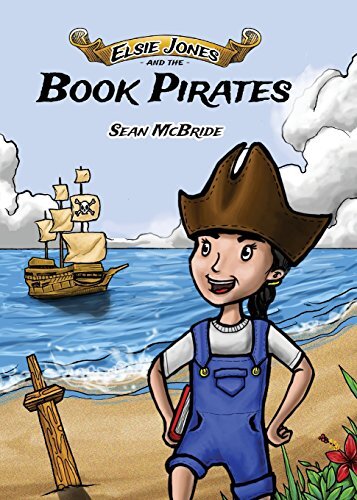
So that’s both the bad news and the good news. We’re going to have to wait a little longer to get the books, but they are going to have some incredible new art work, from an incredible artist. I CAN NOT State how absolutely happy I am that Jesse is willing to stay on board, because the world needs to both read these books and see an incredible artist and not some computer generated pictures.
June 15, 2023
Blind Read Through: J.R.R. Tolkien; The Book of Lost Tales, part 1, The Tale of the Sun and the Moon, part 2
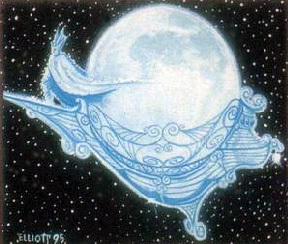
“Everywhere did its great light pierce and all the vales and darkling woods, the bleak slopes and rocky streams, lay dazzled by it, and the Gods were amazed. Great was the magic and wonder of the Sun in those days of bright Urwendi, yet not so tender and so delicately fair as had the sweet Tree Laurelin once been; and thus whisper of new discontent awoke in Valinor, and words ran among the children of the Gods, for Mandos and Fui were wroth, saying that Aulë and Varda would for ever be meddling with the due order of the world, making it a place where no quiet or peaceful shadow could remain; but Lórien sat and wept in a grove of trees beneath the shade of Taniquetil and looked upon his gardens stretching beneath, still disordered by the great hunt of the Gods, for he had not had the heart for their mending (pg 189).”
Welcome back to another Blind Read! This week we conclude the Tale of the Sun and the Moon, and while doing so, we’ll talk about worldbuilding, and Tolkien’s penchant for detail.
We left off last week with the Valinor getting the fruit of knowledge from Laurelin and seeing that it held the light of the tree that once illuminated Valinor. It is a revelation for the Valar, but they still don’t have any way to make the illumination more global.
They contemplate for a bit while until Aulë takes Tulkas’ earlier idea:
“‘Then said Aulë: ‘Of this can I make a ship of light – surpassing even the desire of Manwë.’ (pg 186)”
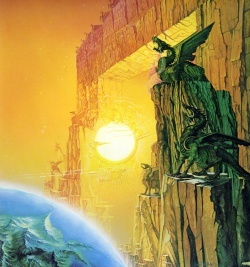
Thus Aulë created the sun, and it sailed through the sky, illuminating the world, but “Ever as it rose it burned the brighter and the purer till all Valinor was filled with radiance and the vales of Eúmáni and the Shadowy Seas were bathed in light, and sunshine was spilled on the dark plain of Arvalin, save only where Ungweliantë’s clinging webs and darkest fumes atill lay too thick for any radiance to filter through (pg 188).”
They realized they had created an issue, a sun that never truly set, and the light bathed the world. One of the most central tenets of Tolkien (if you’ve read anything he had written) is that there can’t be light without darkness. The Valar recognized this as they saw that too much of a good thing (I.E., perpetual sun) eventually hurt them. They harkened back to when they had the two Valinor trees created with Ilúvatar’s themes; they sang into existence and decided to do something with the light of Silpion (the twilight tree).
Lórien sang to Silpion and touched the wound where Ungoliant sucked the life from it, and that little bit of music stirred something in the tree and got the sap moving. A single rose bloomed, holding the silver light of Silpion.
Lórien, proud of their work, “would suffer none to draw near, and this he would rue for ever: for the branch upon which the Rose hung yielded all its sap and withered, nor even yet would he suffer that the blossom to be plucked gently down… (pg 191).”
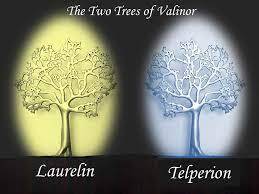
Both of these instances I wrote about earlier matter when we talk about the Valar. They show their ignorance, Hubris, and their childishness. Aulë has no problem stealing ideas from Tulkas and making them his own, notwithstanding that he also claimed to create the Sun. However, that was a group effort to stumble upon a solution, and Aulë only built the last portion, which would sail across the sky.
Meanwhile, the pranks of Melkor lead him to be imprisoned, but because the other Valar are creating and not pranking, they are above reproach.
Tolkien, as Ilúvatar, created these Vala in his image, just like the Christian God. By extension, these attributes were transferred to the Children of Ilúvatar, the Elves, and Men (technically, the Dwarves were created by Aulë, so they wouldn’t be considered one of the Children).
We also see the avarice of Lórien, guarding the Rose of Silpion, not letting anyone else get the benefits out of fear that they would destroy it. This reminds me of a child playing with a toy they don’t allow their friends to touch. Predictably, the branch holding the rose withers, and the rose falls from the tree, and they use the rose to make the Moon.
The result is the creation of the Sun and the Moon and the alternating cycles of celestial illumination. Tolkien matched the movement of these ships sailing the ether to our own, making his mythology nearly complete.
We’ve mentioned before that his main goal was to create a mythology for England, and at this point, he had his early history created. The Elves who went to Middle-earth have an account of murder and violence in their journey to find solace, and humans are yet to be born.
Tolkien puts both sun and night with the corresponding feelings they contain:
“‘and in memory of the waxing and waning of these Trees for twelve hours shall the Sunship sail the heavens and leave Valinor, and for twelve shall Silpion’s pale bark mount the skies, and there shall be rest for tired eyes and weary hearts (pg 191).”

The Sunship brings hope and opportunity, but if that hope and desire fail, or if one were amidst the trials, Silpion’s bark will rise in the Sunship’s place and give melancholy solace.
There is only one more point that Tolkien has to hit before he has his early mythology complete. The story of the world’s creation, moving into the first age of Middle-earth, needs one more step: to hide away the gods from the mortals before they are born.
Join me next week as we move to the penultimate chapter, The Hiding of Valinor.
June 8, 2023
Blind Read Through: J.R.R. Tolkien; The Book of Lost Tales, part 1, The Tale of the Sun and the Moon

“Then there was silence that Manwë might speak, and he said: ‘Behold O my people, a time of darkness has come upon us, and yet I have it in mind that this is not without the desire of Ilúvatar. For the Gods had well-nigh forgot the world that lies without expectant of better days, and of Men, Ilúvatar’s younger sons that soon must come. Now therefore are teh Trees withered that so filled our land with loveliness and our hearts with mirth that wider desires came not into them, and so behold, we must turn now our thoughts to new devices whereby light may be shed upon both the world without and Valinor within (pg 181).'”
Welcome back to another Blind Read! This week we get back into Tolkien’s religious background as we cover the Tale of the Moon and the Sun.
We’ve come to a point in the story where Melkor has killed the Trees of Valinor, and the Noldor killed many of their kin to steal ships to chase Melkor to Middle Earth.
The Vala faced the difficulty of what they should do. Melkor had left Valinor in darkness, and the trees were dead. What should their first action be? To go after Melkor and imprison him again, or try to figure out how to bring light back to Valinor.
[image error]The Spoke to Sorontur (who later became Thorondor), the King of Manwë’s eagles, and asked him to spy on Morgoth.
“…he tells how Melko is now broken into the world and many evil spirits are gathered to him: ‘but,’ quoth he, ‘methinks never more will Utumna open unto him, and already is he busy making himself new dwellings in that region of the North where stand the Iron Mountains very high and terrible to see (pg 176).'”
So the Valar doesn’t have to worry about Melkor for the time being because he will be spending all his time trying to make a home for himself. After hearing the Eagle’s report, it’s their opinion that Melkor will not be returning to Valinor, so he is now the Noldor’s problem, which they deserve because of the transgressions they laid on their fellow kin.
So that brings them back to their other issue. How do they deal with the loss of the light of Valinor? They decide that they must build a great ship and use the remainder of the light of the Trees, and this new ship can be like the stars, but it will travel the sky and light Valinor once again.
The prospect of the ship is exciting because it calls to mind the Greek God Helios, who rode a great chariot across the sky, and that is how the sun was to rise and set. Remember that Tolkien’s ultimate work was to create new mythos and mythology for England because Spencer’s work was sub-par (to Tolkien). This ship across the sky, built by gods, was a way that he could make things unique enough to fit within his landscape of fantasy. He even had a reason for the ship to rise and set:
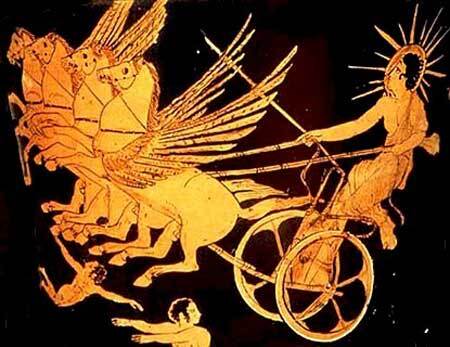
“Now Manwë designed the course of the ship of light to be between the East and West, for Melko held the North and Ungweliant the South, whereas in the West was Valinor and the blessed realms, and in the East great regions of dark lands that craved for light (pg 182).”
But while they built this idea, he collected mythology from other areas and brought it into his ethos. Eventually, the ship was a failure. The downfall shows that Tolkien believed he was writing the ultimate mythology because the portion he took from another culture ultimately failed.
The Vala went back to Yavanna, who had created the Trees in the first place, but she had run through the energy needed. She poured everything she had into the trees, but it was Vána (another Valar who only appears in these early iterations) who made the most significant difference:
“Now was the time of faintest hope and darkness most profound fallen on Valinor that was ever yet; and still did Vána weep, and she twined her golden hair about the bole of Laurelin and her tears dropped softly at its roots; and even where her first tears fell a shoot sprang from Laurelin, and it budded, and the buds were all of gold, and there came light therefrom like a ray of sunlight beneath a cloud (pg 184).”
The tears of love brought Laurelin back to life enough to get those sprouts. “One flower there was however greater than the others, more shining, and more richly golden, and it swayed to the winds but fell not; and it grew, and as it grew of it’s own radient warmth it fructified (pg 185).”

The fruit that grew from the tree of Laurelin grew from tears, death, and rebirth. This fruit was, for Tolkien, his introduction to the Christian ideal of the Fruit of Knowledge. Still, instead of one of the Valar eating it and causing sin, the sin has already been created. The knowledge of death, destruction, jealousy, and Hubris has already taken hold of the peoples of Middle-earth because of Tolkien’s fallen Angel Melkor.
“Even as they dropped to earth the fruit waxed wonderfully, for all the sap and radience of the dying Tree were in it, and the juices of that fruit were like quivering flames of amber and of red and its pips like shining gold, but it’s rind was of a perfect lucency smooth as a glass whose nature is transfused with gold and therethrough the moving of its juices could be seen within like throbbing furnace-fires (pg 185).”
The Valar had found the fruit of knowledge that could shine the light on the land and destroy the darkness. The fruit knew what came before, and its sole meaning was to shine the morning so that others didn’t have to carry the burden of its dark understanding.
Join me next week as we complete the Tale of the Sun and the Moon.
June 1, 2023
Elsie Jones is Coming on 08/01
Hey everyone! I’m taking a week off from writing the Blind Read Blog and focusing on some extra editing, and I wanted to give everyone a special sneak peek of the upcoming Author’s editions of the New Elsie Jones Adventures, which will kick off with Elsie Jones and the Book Pirates on 08/01 of this year!
The Elsie Jones Adventures are a children’s chapter book series where Elsie Jones finds a mysterious secret room in her local library. In that room are fifteen books that, when she reads them, she is transported into their world and adventures with those characters.
Every book has action, humor, adventure, and fun little facts, so join me on this fun adventure!
Check out that special sneak peek below:
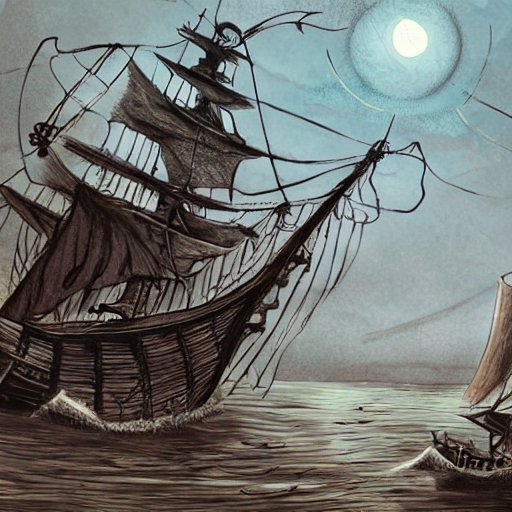
Beyond the door was an old wooden rickety staircase leading down. The walls on either side were brick, which was unlike the rest of the library. It looked so much older than everything else.
Elsie looked around to see if she could ask anyone if she was going in the right direction. When she didn’t see anyone, she considered returning to the main desk and getting her dad to accompany her.
“But I’m in the library,” she said to herself. “Nothing ever goes wrong in the library!”
“Shhhhh!” The person hissed again.
She took a deep breath and one more look around before walking down the steps. At the bottom of the staircase, she found another room filled with books. These books, however, were far older than any of the ones upstairs. Their covers were all shades of brown and red, and the titles faded on their spines. The other thing about this room was that the smell was different too. It smelled like old books. It reminded her of her grandfather’s office, and the memory made her smile.
She scanned the shelves, looking from history book to history book. She saw all kinds of interesting books. She ran her hand across the spines, enjoying the feeling of the old bindings when something odd happened. One of the books on the shelf had a red seven on the spine, just above the title, and when she touched the book, the red seven began to glow.
She pulled her hand back as if the book was hot and then looked at the title: Treasure Island by Robert Luis Stevenson.
“Why is there an adventure about Pirates in the history section?” Elsie asked.
She turned around, expecting the person to shush her again but didn’t hear anything. In fact, she thought she was alone down here in this old History section.
She paused just before touching the book again, but her curiosity got the better of her. It had a faded brown spine, the same as the ones next to it, but on the book’s cover, another bright shiny red seven glowed in the upper right corner.
“Whoa!” she exclaimed.
Excited, she flipped the cover open and saw an intricate drawing of a giant Pirate ship and a pirate with a pegleg and a large hat who held a sword in his hand.
The book was heavy, so she laid it on the ground for a better look. As she leaned over and flipped through it there were awesome color pictures of pirates fighting with swords, burying treasure, and sailing through storms. She also saw photos of a young boy doing all these things with the pirates.
“Oh, that would be so cool!” Elsie said.
“Squire Trelawney, Dr. Livesey, and the rest of these gentlemen having asked me to write down the whole particulars about Treasure Island,” She read.
Then something strange happened; the moment she spoke the pages started to turn on their own, flipping faster and faster until the pictures seemed to move. The pirates jumped on the ship and fought each other with their cutlasses. Elsie leaned back in surprise. One of the pirates turned to her and waved his hand, gesturing for her to join them.
May 25, 2023
Blind Read Through: J.R.R. Tolkien; The Book of Lost Tales, pt 1, The Flight of the Noldoli
 Art by Fran Fdez
Art by Fran Fdez“Now tells the tale that as the Solosimpi wept and the Gods scoured all the plain of Valinor or sat despondent neath the ruined Trees a great age passed and it was one of gloom, and during that time the Gnome-folk suffered the very greatest evils and all the unkindliness of the world beset them. For some marched endlessly along that shore until Eldamar was dim and forgotten far behind, and wilder grew the ways and more impassable as it trended to the North, but the fleet coasted beside them not far out to sea and the shore-farers might often see them dimly in the gloom, for they fared but slowly in those sluggish waves (pg 166).”
Welcome back to another Blind Read! This week we delve into Tolkien’s storytelling process and understand why he wrote the book and where he wanted it to go.
We left off last week with the Darkening of Valinor and the betrayal of Melkor. As soon as we start this chapter, we find that Tolkien intended this chapter to be part of the events of The Darkening of Valinor. Christopher edited this into a separate chapter because he knew where the narrative would eventually lead.
“There is no break in Lindo’s narrative, which continues on in the same hastily-pencilled form (and near this point passes to another similar notebook, clearly with no break in composition), but I have thought it convenient to introduce a new chapter, or a new ‘Tale’, here, again taking the title from the cover of the book (pg 164).”
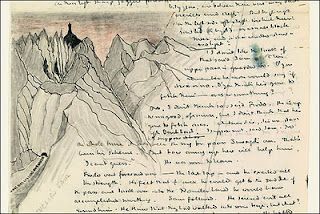
Christopher segregated this chapter because, as it’s written, it’s missing some of the weight that goes into the betrayal and exile of the Noldor Elves.
The Book of Lost Tales tells the story of Valinor and the Valar, but the story at the core of The Silmarillion is about the Elves. They were the ones who created humanity and life in the world. Where the Valar did the act of making the world with their song, the Eldar (and later on Humans) created culture and meaning, which gave Middle-earth purpose.
In his development of The Book of Lost Tales (only called this because that’s what Christopher called it), Tolkien wanted to understand what these Angels were like; what their personalities were, how they treated each other, and how they treated the “Children.”
I’m not convinced that these books (The Book of Lost Tales, Vol 1 and 2) were ever meant to see the light of day, especially since Christopher admits that the material comes from notebooks and scrap paper, but what is impressive about them is that we get to see the development of the world from the ground up.
 Tolkien is circled
Tolkien is circledTolkien was a plotter and wanted his mythology (his fairy tale) to be as complete as possible. So he worked for years (first putting pen to paper during his time in the trenches of the Great War), making sure that this Magnum Opus was precisely how he wanted it.
When it comes to this chapter, Tolkien came to realize that the Noldor was not severe enough. The fact that Melkor stole some gems and then was made to return some of them was not enough. The fact that Melkor killed Fëanor’s father, the first death of an Eldar ever, was not enough. He needed the Eldar to have their arc unique from the Valar and much more interesting than the Valar because stories where gods are the centerpiece just aren’t as interesting. Tolkien himself knew this, and that’s why his two “novels” (The Hobbit and The Lord of the Rings) had simple people as the main protagonists. Life and art are just more enjoyable when you have to overcome obstacles.
So Tolkien took a look at his early flight of the Noldor and made a note:
“At the top of the manuscript page and fairly clearly referring to Fëanor’s words my father wrote: ‘Increase the element of the desire for the Silmarils’. Another note refers to the section of the narrative that begins here and says that it ‘wants a lot of revision: the [?thirst ?lust] for jewels – especially for the sacred Silmarils – wants emphasizing. And the all-important battle of Cópas Alqaluntë where the Gnomes slew the Solosimpi must be inserted (pg 169).'”
Cópas Alqaluntë is the core of why Christopher separated this chapter. The Noldor killing their kin to steal their boats to seek vengeance from Melkor doesn’t hit as hard if it is part of the story of the Darkening of Valinor.
Tolkien needed to create a new chapter and new motivations (which he did in The Silmarillion) to make their actions more impactful. This singular act creates a rift between the Eldar and the Valar, and Fëanor’s never-ending rage drives the narrative for the remainder of the Age.
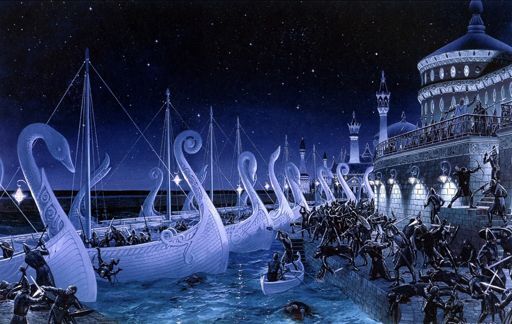 Cópas Alqaluntë
Cópas AlqaluntëHis firey and charismatic personality gave the Noldori Elves something to rally behind, and the fact that he created the Silmarils himself (and that they held the light of the now-dead Trees of Valinor) raised the stakes much more.
Tolkien turned his thoughts bloody and created a visceral battle where the Noldor turned against their brethren in a brutal and bloody way, which was not present in this earlier version. This act is what damned the Noldor for the rest of time:
“Songs name that dwelling the Tents of Murmuring, for there arose much lamentation and regret, and many blamed Fëanor bitterly, as indeed was just, yet few deserted the host for they suspected that there was no welcome ever again for them back to Valinor – and this some few who sought to return indeed found, though this entereth not into this tale (pg 168).”
Join me next week as we delve into “The Tale of the Sun and the Moon.”
May 18, 2023
Blind Read Through: J.R.R. Tolkien; The Book of Lost Tales, part 1, The Darkening of Valinor
 art by OttoB63
art by OttoB63“Now Melko having despoiled the Noldoli and brought sorrow and confusion into the realm of Valinor through less of that hoard than aforetime, having now conceived a darker and deeper plan of aggrandisement; therefore seeing the lust of Ungwë’s eyes he offers her all that hoard, saving only the three Silmarils, if she will abet him in his new design (pg 152).”
Welcome back to another Blind Read! This week we’re going to dive into the philosophy of Tolkien’s world through the events of The Darkening of Valinor.
We’ve discussed it before, but Tolkien relied heavily on his Christian background while creating this mythology. He wanted something new and unique for England, and as we know, mythologies are all origin stories.
The people of Middle-earth (Elves, Men, Dwarves, etc.) are all iterations of our evolution, and it shows from the beginning of The Book of Lost Tales that Tolkien intended for Middle-earth to be a precursor to Earth (he even calls it Eä in the Silmarillion).
 Art by Abe Papakian
Art by Abe PapakianBecause this is mythology, Tolkien brings his version of the afterlife and the angels he introduces to the world. Melkor, who is Tolkien’s version of Satan, is ostracized for stealing the Eldar gems and Silmarils. Cast out of Heaven as it were:
“Now these great advocates moved the council with their words, so that in the end it is Manwë’s doom that word he sent back to Melko rejecting him and his words and outlawing him and all his followers from Valinor for ever (pg 148).”
But it was still during this period that Melkor was mischievous, but he had not transitioned to evil yet, even after being cast out of Valinor. So instead, he spent his time trying to create chaos using his subversive words:
“In sooth it is a matter for great wonder, the subtle cunning of Melko – for in those wild words who shall say that there lurked not a sting of the minutest truth, nor fail to marvel seeing the very words of Melko pouring from Fëanor his foe, who knew not nor remembered whence was the fountain of these thoughts; yet perchance the [?outmost] origin of these sad things was before Melko himself, and such things must be – and the mystery of the jealousy of Elves and Men is an unsolved riddle, one of the sorrows at the world’s dim roots (pg 151).”
The great deceiver has been created out of jealousy and anger for these beings of Middle-earth, believing that they were given more than their fair share and his own acts were ruined from the beginning of the Music of the Ainur.
But what did the Elves do? Was there anything they received that made anything Melkor did excusable?
“And at the same hour riders were sent to Kôr and to Sirnúmen summoning the Elves, for it was guessed that this matter touched them near (pg 147).”
It was nothing that they did, but the fact that the Valar treated them as equals to the Valar and Melkor’s slights against them weren’t considered pranks he felt they were, so his anger grew.
They were also allowed to be near their loved ones even after death. Elves were given the gift of immortality but can still be killed by disease or blade. But where do their spirits go when they die? Remember that this is a Christian-centric mythology, so Tolkien built an afterlife.

Called Vê after the Valar who created it, the afterlife on Middle-earth is contained within and around Valinor. This early conception (nearly cut entirely from The Silmarillion and The Lord of the Rings) was that Vê was a separate area of Valinor, slightly above and below it but still present, almost like a spirit world that contained the consciousness of the dead.
This region was all about, and the Eldar cannot commune with their deceased, but they continue to live close to them, and their spirit remains in Valinor.
“Silpion is gleaming in that hour, and ere it wanes the first lament for the dead that was heard in Valinor rises from that rocky vale, for Fëanor laments the death of Bruithwir; and many Gnomes beside find that the spirits of their dead have winged their way to Vê (pg 146).”
Melkor is jealous that the Elves can be so close to their dead ancestors, but he also doesn’t fully comprehend what being dead means because he is a Valar and eternal. He sees these beings going off to a different portion of Valinor and is upset because he thought he found a way to create distress amongst them by killing one of them. He doesn’t realize that he made a fire in the Eldar that would never wane.
“‘Yea, but who shall give us back the joyous heart without which works of lovliness and magic cannot be? – and Bruithwir is dead, and my heart also (pg 149).'”
Melkor schemed and stewed in his frustration and anger, feeling that even with his theft and his killing of Fëanor’s father, the first death of an Eldar (whom Tolkien was still calling Gnomes in this early version), there was nothing he could do to prove his worth, so his worth turned to evil. His music was dissonant and didn’t follow the themes of the other Valar, and he was looked down upon for that and cast aside. He pulled pranks that caused the other Valar to imprison him. All the while, his anger, and distrust grew until he did the ultimate act, which caused his to turn to true evil: He partnered with Ungoliant (the giant spider queen and mother of Shelob) and killed Silpion and Laurelin, the Trees which gave light to Valinor.

“Thus was it that unmarked Melko and the Spider of Night reached the roots of Laurelin, and Melko summoning his godlike might thrust a sword into its beauteous stock, and the firey radiance that spouted forth assuredly had consumed him even as it did his sword, had not Gloomweaver (Ungoliant) cast herself down and lapped it thirstily, plying even her lips to the wound in the tree’s bark and sucking away it’s life and strength (pg 153).”
Melkor had finally become evil. He had turned against the Valar and what brought the world light and gave that power to evil creatures.
The Valar and Eldar cried out against Melkor for being cruel, but the tragedy of Melkor’s story was that he never had a choice.
Early in the mythology of this world, Tolkien tells us that Ilúvatar had a theme and a story for eternity, which the Valar were not privy to. Instead, they thought their music and their acts were meant to create only beauty and love.
Ilúvatar, however, knew that to have true meaning, there must be pain, conflict, and evil. Otherwise, all the world’s good would disappear and become mundane. So Ilúvatar created Melkor, knowing what he was going to become. He made Melkor evil in the world.
Melkor was born to suffer. Melkor was born never to know love. Melkor was created to become a creature that others could be tricked into feeling sorry for, and thus trade the light of the Valar for the Darkness of the Dark Lord.
Join me next week as we cover “The Flight off the Noldoli!”
May 11, 2023
Updates 05.08.23
Hello everyone! I wanted to take a moment to quickly update what I have going on this year! The Blind Read Blog will continue, but as I optimize the website, there may be changes to the nomenclature and how the blog is presented. However, the content will remain the same, so you can continue to enjoy the current weekly essay on Tolkien’s work. This update is about all other works in progress (some very soon!) and all the worlds I plan to unfold upon the world!
Elsie Jones AdventuresThis children’s chapter book series is filled with action and adventure for ages 6-12. The series follows Elsie Jones as she finds a strange passageway in her local library that leads to a room with fifteen books. When she reads the books, she is literally pulled into them and goes on adventures with the characters. Each book is a literary classic that exposes and expands literacy while having a fun adventure.
I am re-releasing “Author editions” of the first three books and will continue with the remaining twelve, but in the meantime, if you want the originals, check down at the bottom of this page (or here) to purchase them!
Elsie Jones and the Book Pirates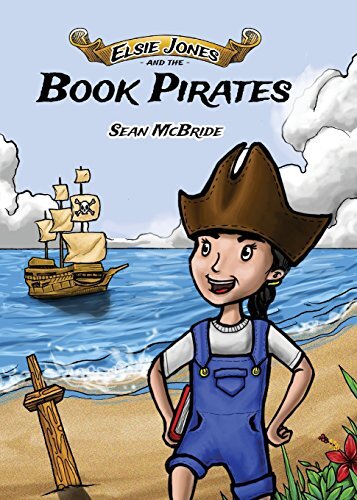
The first book in the series! This book introduces Elsie, and she enters “Treasure Island” by Robert Louis Stevenson and has a swashbuckling adventure. Elsie finds a strange door in her local library she’s never seen before. When she enters it, she finds a secret room with fifteen numbered books on marble pedestals that look extremely old. The moment she begins to read one, she is sucked into its world. The tentative release date is 08/01/2023!
Elsie Jones and the Revolutionary Rebels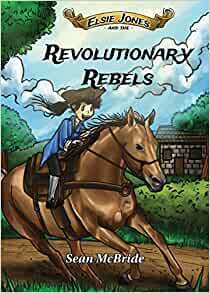
The Second book in the series! In this continuation of Elsie’s adventures, she enters the book “Common Sense” by Thomas Paine, heads back to Revolutionary Boston, and joins up with figures of the American Revolution while they are on the brink of war. Lurking just at the edges of things, however, are the mysterious Dark Hats.
Elsie Jones and the Captain’s Guard
The Third book in the series! Elsie enters the world of “The Three Musketeers” by Alexandre Dumas and has an adventure in France filled with sword fighting and daring prison escapes. As always, the insidious Dark Hats are lingering just behind the scenes.
Elsie Jones and the Westward AdventurersThe Fourth book in the series! Elsie enters the world of “The Pathfinder” by James Fenimore Cooper and travels through the American West with the Louis and Clark Expedition. The Dark Hats have been growing stronger, and it isn’t until now that their motivations begin to become apparent.
Elsie Jones and the Transylvanian TwistThe Fifth book in the series! Elsie enters the world of “Dracula” by Bram Stoker and goes on a spooky adventure in Transylvania. She learns that Friendship is more than meets the eye and finds more going on in her literary worlds than she first anticipated.
Elsie Jones and the London FogThe Sixth book in the series! Elsie enters the world of “The Casebook of Sherlock Holmes” by Sir Arthur Conan Doyle. She helps the famous detective solve a mystery and discovers who is behind the Dark Hats’ plots.
I’m keeping the next nine books under wraps so far, but there are plenty of easter eggs in the books themselves if you are interested in figuring out the larger mystery of the series plot or if you just want to know which book comes next!
The plan is to release a book every three to six months to keep things fresh.
The LegacyThis book is an action/adventure novel in the vein of Indiana Jones. Centered in the mystery of Oak Island, Drake Teller, and his fellow archaeologists discover a secret hidden for centuries. The more they dig, the more they find that they are not the only ones searching, and even deeper forces might be working to protect… or destroy the secrets they’ve uncovered.
This book has two drafts and is currently being edited and shopped to agents.
ElsinoreCurrently being developed as a comic book, Frank and Christy Harvey find themselves in a strange town in Western Texas after a car crash. The town of Elsinore is filled with strange characters with equally strange backgrounds, but it’s not the people of Elsinore that are the problem. The town seems to be a hatch to the gateway of Hell, and Frank and Christy find themselves in a battle between two factions in town. One trying to keep the seal intact and one hell-bent on merging the underworld with our own world. The problem is, which group is which? Who can they trust?
The Monster InsideA book of Horror short stories, many of which can be found on this website. There are monsters all through the world, the question is, are the ones we harbor inside any better? This book will contain dozens of short stories, from the series of stories inspired by the Universal Monsters to the 80’s retro horror story collection and several originals. From adventurous, to fun, to downright scary, don’t miss this collection!
The Revolution CycleThis is a ten-book series that follows a group of teenagers embroiled in the midst of a Revolution. I’ve been working on this series for the last twenty years and finally have the books in the shape where I want them.
The Monster in the WoodsThe first book in the series, this book introduces the world and the characters. A young group of outcasts finds a strange message and map in one of their quirky Uncle’s attic after he mysteriously goes missing. It leads them into an adventure to find the truth about the world they were born into and the horrible monster that prowls the fences at the edge of town at dusk.
The book is framed as a Goonies-style adventure, so expect lots of action, mystery, and fun in this coming-of-age story.
I have a few other projects going on right now as well, but they are still too early to talk about. You may see some roots of these in previous Updates, but There is quite a bit going on right now, so they are taking a back seat.
In the meantime, check out my book:
A View of the Edge of the WorldThis is a short story collection inspired by the Twilight Zone. Filled with strange stories, from Science Fiction to Literature, to Horror, they all have that familiar Twilight Zone spin.

A View of the Edge of the World
We live in reality-in the moments and interactions of the day-to-day. We have faith in reality, because without it, there is no meaning and no truth. What is reality, though? Is it defined by the senses-taste, touch, smell, sight-or is it a state of mind? Does it only exist within the human brain, and if so, can one person’s reality be in direct opposition to that of another? A View of the Edge of the World is a collection of stories that escapes the realm of our known reality and delves into the extraordinary. An obese child struggles to find meaning with the help of a supernatural stranger. A disillusioned soldier on the verge of insanity wrestles against time to save his mind, while strangers trapped in an all-night diner fight to solve a murder and save their lives. Each story takes a trip to the edge of the world, whether that edge is physical, psychological, or spiritual. Each story questions the truth of our reality. From the depths of space to the horrors created by one man’s imagination, ask yourself: do you have the strength to step to the edge and look over? Or will the view leave you questioning your own sense of reality-and possibly your sanity?
$16.95
Click here to purchase.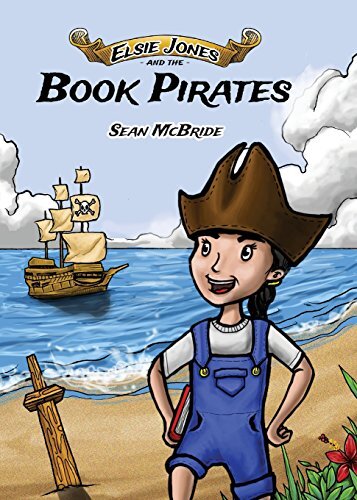
Elsie Jones and the Book Pirates
Adventuress ExtraordinaireMeet Elsie Jones, a young girl who loves to read. On one of her trips to the library, she discovers something unexpected. A book whose words and images twist on the page, a portal to another world.Elsie finds herself sailing through the pages aboard the Adventure Galley with her crew of pirates. All seems well until she learns of a dangerous threat… The Dark Hats.Can a rag-tag group of pirates and a reader keep the Dark hats from their dastardly goal?
$6.99
Click here to purchase.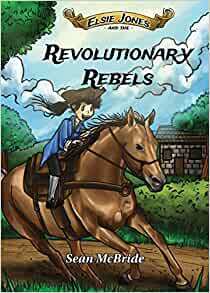
Elsie Jones and the Revolutionary Rebels
In her most historic adventure yet, Elsie rides with Paul Revere and the Patriots of the American Revolution. Not only does she have the British to worry about, but the Dark Hats are determined to ransack the Library at the Old Manse. Come along, as she gallops to the rescue!
$6.99
Click here to purchase.
Elsie Jones and the Captains Guard
The third installment in the enchanting series of a young girl who loves books. Using them as portals to past decades, she teams up with prominent historical figures. In this exciting tale, she joins the Three Musketeers as they embark on a mission to rescue King Phillipe from the Bastille. His twin brother has claimed the throne and sided with Dark Cloak. Taking up arms, Elsie helps fight off the evil entities threatening Paris, making new friends along the way.
$6.99
Click here to purchase.


